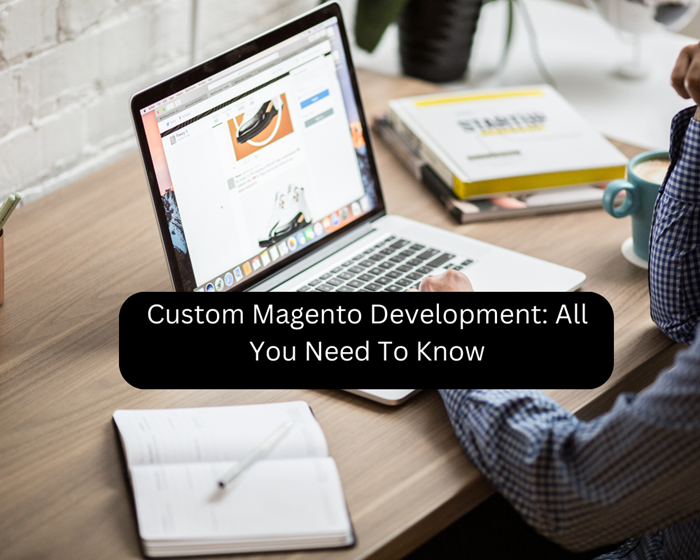
Custom Magento Development: All You Need To Know
After seeing a vacuum in the market, Roy Rubin and Yoav Kutner founded Varien at UCLA and used Google Adwords money to develop Magento. Launched as open source in 2008 and saw growth in popularity, it changed its name in 2010 from Varien to Magento. In 2016, Magento Enterprise was launched and rebranded in 2017 as Magento Enterprise and Open Source included in Adobe Experience Cloud and purchased by Adobe in 2018 for $1.68 billion. In 2018, Adobe released Magento 2.3, which included Google connectivity and Amazon syncing.
More people Google the term Magento than ecommerce. This exemplifies the impact the platform has retained. In just 12 short years, the company has gained much attention thanks to the custom magento development of the open-source platform.
Magento is one of the most respected e-commerce systems in the world for developers of e-commerce websites.
It is more crucial than ever for businesses to have an online presence in today’s increasingly digital and corresponding world. For many companies, that presence should center around and flow into an eCommerce platform. Magento’s scalability capabilities, multi-channel support, SEO friendliness, and vigorous security make it a preferred choice for businesses. Magento enables the development of distinctive and incredibly functional e-commerce websites thanks to its big developer community and various extensions and themes.
Essential facets of Magento development, such as advantages and the process for setting up a Magento store, will be discussed in this piece.
What stands for Magento Web Development?
Using the Magento platform, Magento development entails building and modifying an online store. It encompasses developing the architecture of a website incorporating features and functionalities, personalizing the user interface/user experience, and connecting payment and delivery providers.
The goal of the Magento development company is to provide a flawless online shopping experience that supports the company’s purposes. Designers, developers, and stakeholders must work together to achieve the objectives and specifications.
Stages of Magento Website Development Process
Below, we have listed the fundamental processes required to create a Magento store.
Planning and Determining Goals
Before beginning the creation process, you should plan and establish specific goals and objectives for your online store. This encompasses determining the target market, goods or services, spending limit, and schedule.
Selecting a Web Hosting Company
A reputable Magento hosting company guarantees website performance and speed. Selecting a hosting package that provides high uptime, dedicated servers, and round-the-clock assistance is advised.
Installing the Most Recent Version of Magento
After selecting the Magento website development services, you can install the most recent version of Magento on your server. You have two installation options: manually or with just one click.
Customizing the Store Theme
The next step is to design and customize your store’s theme to fit your brand’s identity. Either make your custom theme or select one from the pre-made ones. Using a default theme, modifying a piece to suit your requirements, purchasing theme templates, or creating a piece of music from scratch are all options.
Read: Social Media Smiles: Best Practices in Dental Marketing
Configure a Catalog
After modifying the theme, you can add the products and categories to build your Magento catalog. Additionally, you can sell downloaded, virtual bundles, grouped, and customized products.
Including Payment and Shipping Providers
PayPal, credit/debit cards, and cash on delivery are just a few of the payment options that Magento accepts. Order delivery on time is ensured by integrating a reputable shipping company. You can also incorporate shipping calculators in custom magento development for precise shipping quotes.
Final Preparation Before the Launch
To ensure everything works as it should when the store is configured, run through the Magento go-live checklist and do several tests. Check that your website works as it should, testing the payment and shipping processes, checkout processes, and any extensions or special features.
How much time does it take to build a custom Magento store?
The nature of the task will ultimately determine how long it takes to create a bespoke Magento store. It may require a week or several years to complete. It goes without saying that developers will know how long it will take before they begin working on the project.
The top custom Magento development company will first collaborate with you to fully grasp your project’s goals. After that, they’ll be able to give you a rough idea of how long developing the business would take.
Naturally, the complexity of the work that needs to be done will determine how long it takes to develop the custom shop.
Conclusion
Your eCommerce enterprise will benefit from the flexibility, vigorous security, and customizable design that Magento web development offers. It provides all-inclusive explanations for improving customer satisfaction and facilitating the operations of your online store.
Using Magento website development services at entirely conceivable expands your online visibility and spurs business accumulation. The scalability and speed of your store can be enhanced by selecting a Magento multi-server hosting explanation.
Author’s Bio:
Adam Parker is a Magento developer at HTMLPanda, a prominent web development company. He loves to share his insights on Magento development via informational blogs.